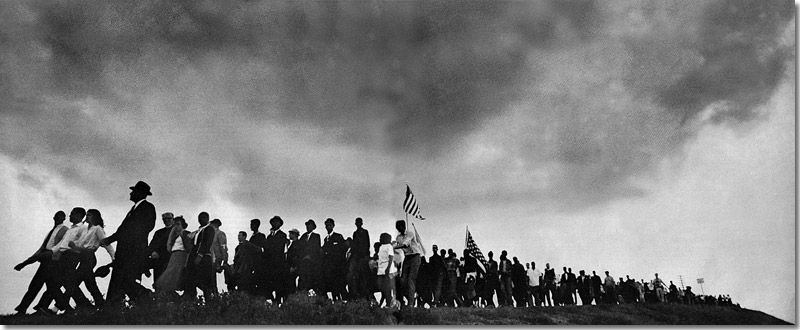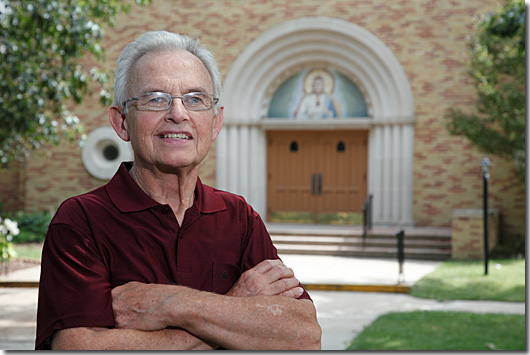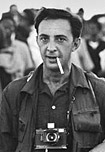John Krejci "Selma: Turning Point for the Church"

|
||

|
|
Above – "A succession of marchers carried American flags from Selma to Montgomery. The flags contrasted with the Confederate banners emblazoned on the jackets and helmets of federalized Alabama National Guardsmen along U.S. Highway 80." Left, John Krejci was one of four young priests from Omaha who got the call come to Selma after Bloody Sunday. He believes their presence helped keep the police and Ku Klux Klansmen from committing more violence in the weeks between that Sunday and the final, triumphant march to Montgomery March 21-25, 1965. John says the experience was "transformative" for him and the nation. |
|
John Krejci was a young priest from Omaha when the call went out to come to Selma. He and three of his friends (among others) went. It was this outpouring of religious activism that LOOK covered in their article. They said Selma was a "Turning Point for the Church." Krejci remembers the days he spent in Selma as a "transforming experience – of the care, the brotherhood and sisterhood of the people. Here were people who are seeking justice and coming together. Different races, different parts of the country. Those were just special times." Selma deepened Krejci's lifelong commitment to activism on social justice issues. "I remember the big fat cops with their billy clubs pushing you in the chest," he says. "We were on one side of the line [barricades] and they were on the other… It was emotional, and we were doing the right thing." As the request to get federal protection for the marchers drug on through the courts, Krecji had to return to Omaha. He didn't march to Montgomery. |
|
"When we came back from Selma, you'd go into a room and you'd see a policeman. White kids grow up [believing] the policeman is your friend. [After Selma] I'd feel, 'That's the enemy.'" We've identified other marchers, but haven't had the resources to follow up and interview them, yet. Each spring, the Selma Voting Rights Museum hosts a "Jubilee weekend" where marchers and dignitaries gather to honor the 300 who walked every one of the 54 miles between Selma and Montgomery, and the 25,000 who gathered on the last day to hear Martin Luther King give one of his best speeches. Historians credit the violence surrounding the Selma march with passage of the 1965 Voting Rights Bill, a law that changed politics in the U.S. John Krejci died in 2021. |






